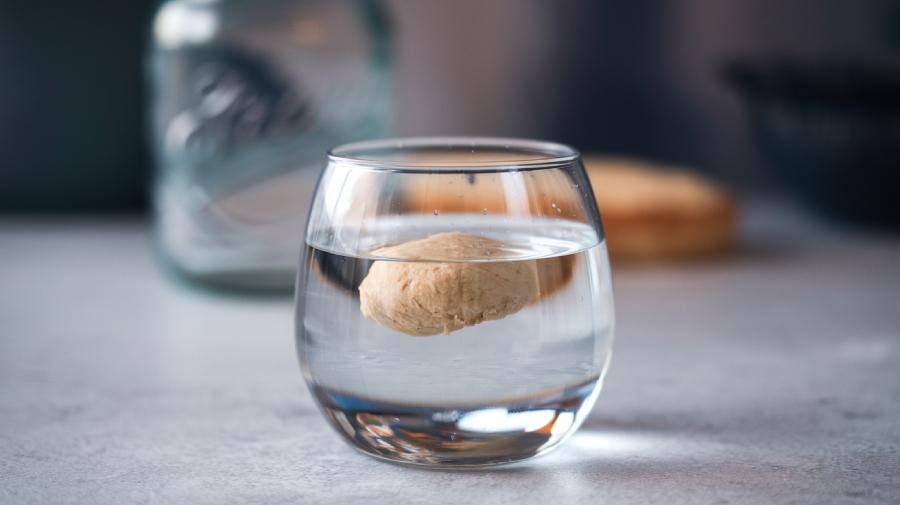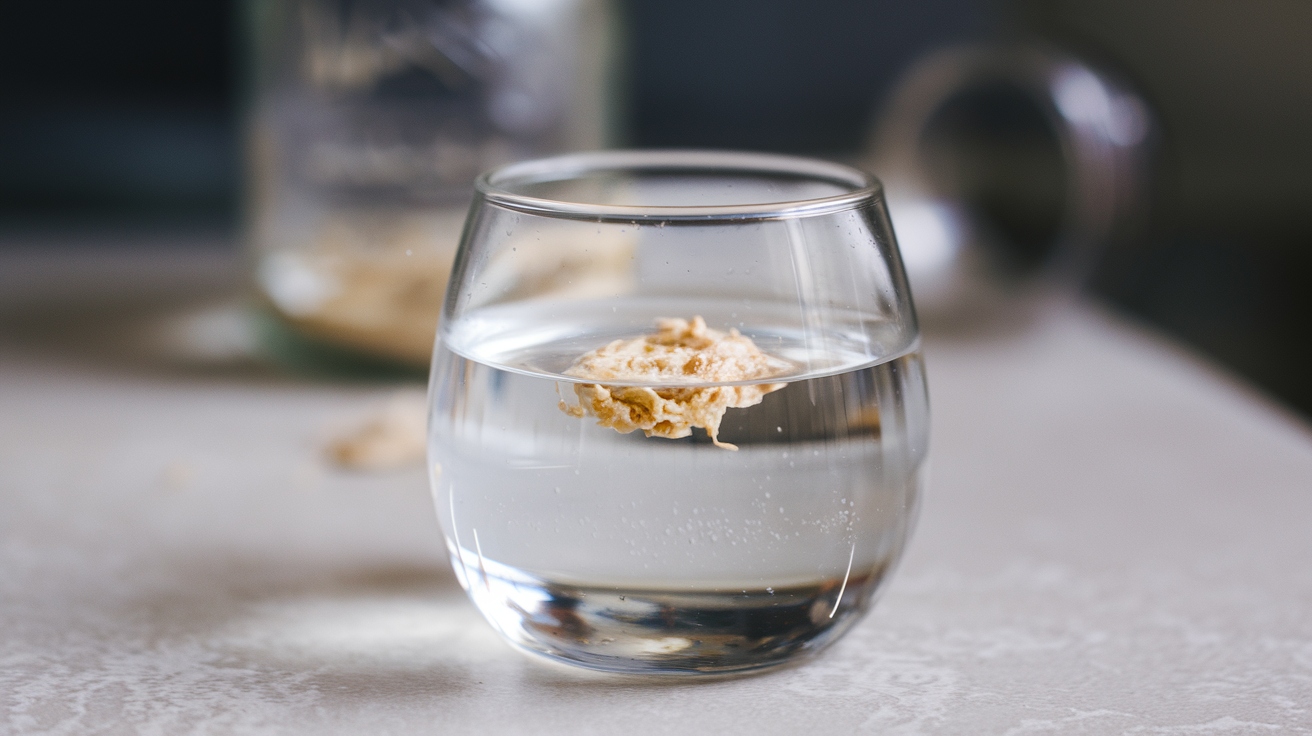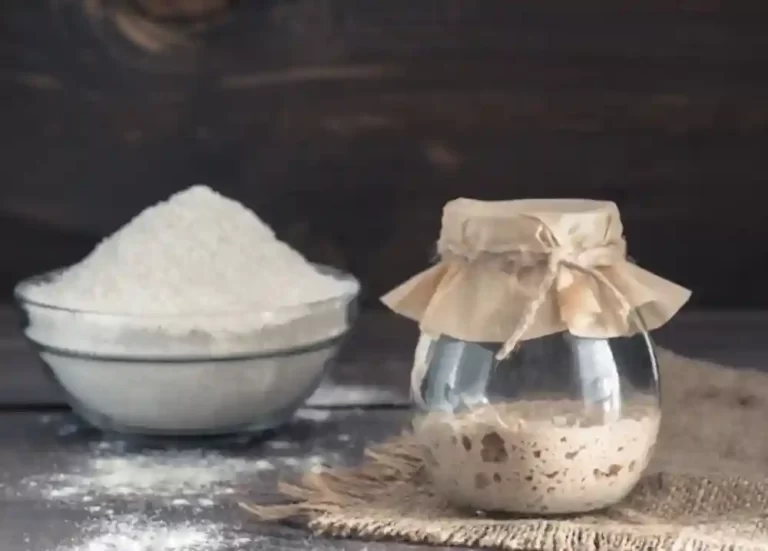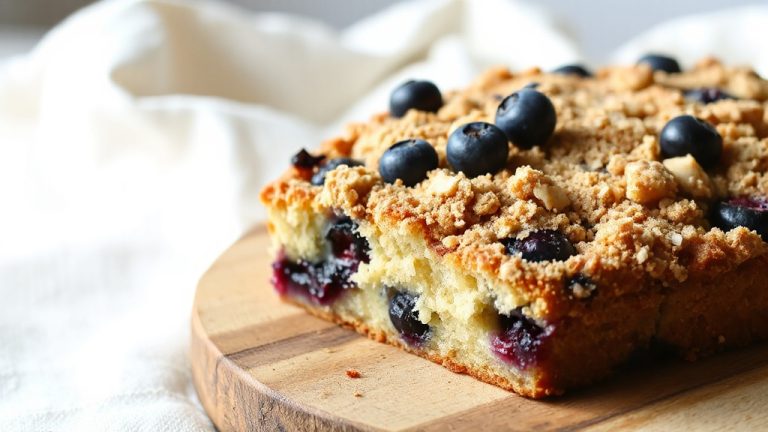Sourdough Float Test: Your Guide to Starter Readiness
The sourdough float test is your vital method for evaluating starter readiness. Simply drop a spoonful of your starter into a bowl of room temperature water; if it floats, it’s packed with gas bubbles and ready to bake.
For best results, wait 4-6 hours after a feeding with a 1:1:1 ratio, ideally with a starter at least two weeks old. However, environmental factors can impact your results, so stay consistent with your feeding schedule.
False positives or negatives can occur, too, highlighting the importance of additional indicators in your evaluation process. There’s a lot more to uncover about perfecting your baking journey.
Key Takeaways
- The float test checks a sourdough starter’s readiness by dropping it in water; it should float if it’s properly fermented.
- Conduct the float test 4-6 hours after feeding your starter with a 1:1:1 ratio for optimal results.
- A reliable float test is more likely with a starter that has been fed regularly for at least two weeks.
- Environmental factors like temperature and humidity can affect the float test results, impacting starter performance.
- If your starter is deflated, it may need additional feedings and time to rise before using it in baking.
Float Test: What You Need to Know?
When you’re ready to determine if your sourdough starter is primed for baking, the float test is an invaluable tool. This simple yet effective method involves dropping a spoonful of your starter into a glass of room temperature water. If it floats, congratulations! Your starter’s buoyancy indicates it’s ready for baking, thanks to the gas bubbles produced during fermentation.
This test is most reliable when your starter has reached maturity, typically after at least two weeks of consistent feeding. A fed starter is especially important for achieving the best performance in your baking, as it supports the growth of wild yeast and bacteria.
When conducting the float test, timing is essential. Aim for 4-6 hours post-feeding, using a 1:1:1 feeding ratio, to guarantee your starter is at peak activity. Remember, though, that young starters or high-hydration levains may yield false negatives, sometimes sinking due to structural disruption.
Don’t rely solely on the float test; look for alternative signs of readiness too. Check for visible bubbles, a pleasant aroma, and that your starter has doubled in size within 6-8 hours after feeding.
Tips for Best Results

To achieve the best results with your sourdough float test, focus on maintaining a consistent feeding schedule and proper starter care. Conduct the float test 4-6 hours post-feeding when your mature starter is most active. A starter that’s at least 4 weeks old will provide more reliable results. Use a gentle scooping technique to transfer your starter, preserving those precious bubbles of carbon dioxide, as they play an essential role in the test’s accuracy.
Here’s a quick reference table to help you optimize your starter’s performance:
| Factor | Recommendation | Notes |
|---|---|---|
| Feeding Ratio | 1:1:1 (starter:water:flour) | Adjust if your starter is too runny. |
| Consistency | Thick pancake batter | Thicker starters trap gas better. |
| Timing | 4-6 hours post-feeding | Make certain it’s at peak activity. |
| Environmental Factors | Monitor temperature & humidity | These greatly influence starter performance. |
| Starter Maturity | At least 4 weeks old | A mature starter enhances gluten structure. |
Limitations of the Float Test
While the float test offers a quick method to gauge your sourdough starter’s readiness, it comes with notable limitations that bakers should be aware of. One significant issue is the potential for false positives and negatives. Starters younger than 2-4 weeks may float without achieving true fermentation readiness, while older starters can sink yet still be viable for baking.
High hydration starters pose another challenge; they can disintegrate in water, misleading you about their readiness.
Moreover, the float test isn’t universally applicable. It may not work effectively for denser or over-hydrated doughs. Environmental factors like temperature and humidity dramatically influence results, making consistency in testing conditions essential.
Remember, the float test primarily indicates gas retention rather than an overall assessment of fermentation readiness.
To guarantee reliable outcomes, you should use the float test alongside other indicators, such as size doubling consistently and visual cues. This thorough evaluation will provide a more accurate picture of your sourdough starter’s state, enabling you to achieve the perfect rise and flavor in your baking endeavors.
Handling a Deflated Starter
Although a deflated sourdough starter might seem discouraging, it can still be a valuable asset in your baking journey. A deflated starter indicates it may need additional feeding to encourage it to rise again. Regular monitoring of its behavior is essential for determining ideal feeding times and methods for revitalization.
To improve its liveliness, consider establishing a consistent feeding routine with an ideal feeding ratio of strengthening your starter to promote yeast growth.
To enhance your deflated starter’s performance, consider adjusting your feeding routine. Increasing the frequency of feedings or altering feeding ratios can lead to better results. Make certain to provide the right balance of flour and water to help the starter regain its strength.
Environmental factors, such as temperature and humidity, greatly impact your starter’s ability to maintain activity and prevent deflation. Warmer, more humid conditions often promote faster fermentation, while cooler, drier environments may slow it down.
Before using the deflated starter in recipes, wait for it to rise again—ideally, doubling in size. This guarantees it’s producing enough gas to contribute to your dough’s rise and texture.
Frequently Asked Questions
What Is the Sourdough Float Test?
The sourdough float test is an essential method for gauging your starter’s readiness for baking.
By dropping a spoonful of your starter into room temperature water, you can observe its buoyancy. If it floats, it’s at peak activity, indicating it’s ready for use; if it sinks, it likely needs more time or a feeding.
This simple test allows you to guarantee your sourdough is at its best before you begin crafting your bread.
What if Sourdough Doesn’t Pass the Float Test?
If your starter doesn’t pass the float test, don’t panic! It might just need more time or a fresh feeding.
Check for signs of readiness like bubbling, foam, and whether it’s doubling in size after feeding. Environmental factors could also play a role, so consider adjusting your feeding schedule.
Even if it sinks, you can still use it for baking; just give it some love and patience to regain its strength.
Is Sourdough Starter Ready if It Doesn’t Float?
Just because your sourdough starter doesn’t float doesn’t mean it’s not ready for baking.
Think of it like a symphony; even if one instrument falters, the harmony can still be intact.
If your starter shows signs of life—bubbles, a pleasant aroma, and has risen in size—it’s likely viable.
Focus on its overall behavior and activity, not just the float.
Patience and observation will guide you to deliciously baked bread.
How Do You Know if Your Sourdough Starter Is Ready?
You can tell if your sourdough starter’s ready by observing its activity.
After feeding, it should double in size within 6-8 hours, showcasing abundant bubbles and foam on the surface. This indicates vigorous fermentation.
A thicker consistency, similar to pancake batter, helps trap gas bubbles effectively.
Keep an eye on environmental factors like temperature and humidity, as they can influence your starter’s performance.
Regular monitoring is essential for achieving the perfect baking conditions.
Is Your Starter Ready?
The sourdough float test isn’t just for checking your starter’s readiness; it’s an essential part of artisanal baking. It might seem complicated at first, but it gets easier with practice. Every test will deepen your understanding of fermentation if you embrace the process.
So don’t be afraid to try baking with a vibrant, bubbly starter that promises delicious loaves. Let’s get started!







